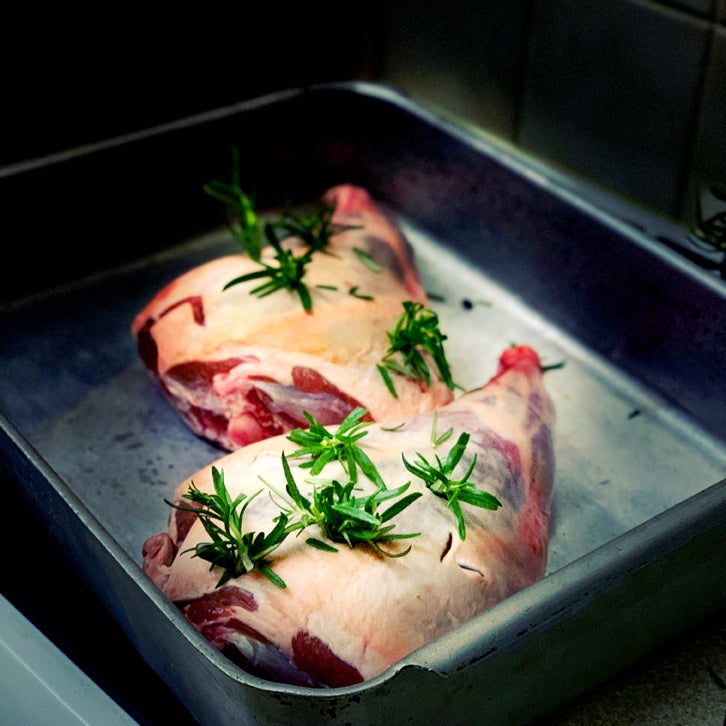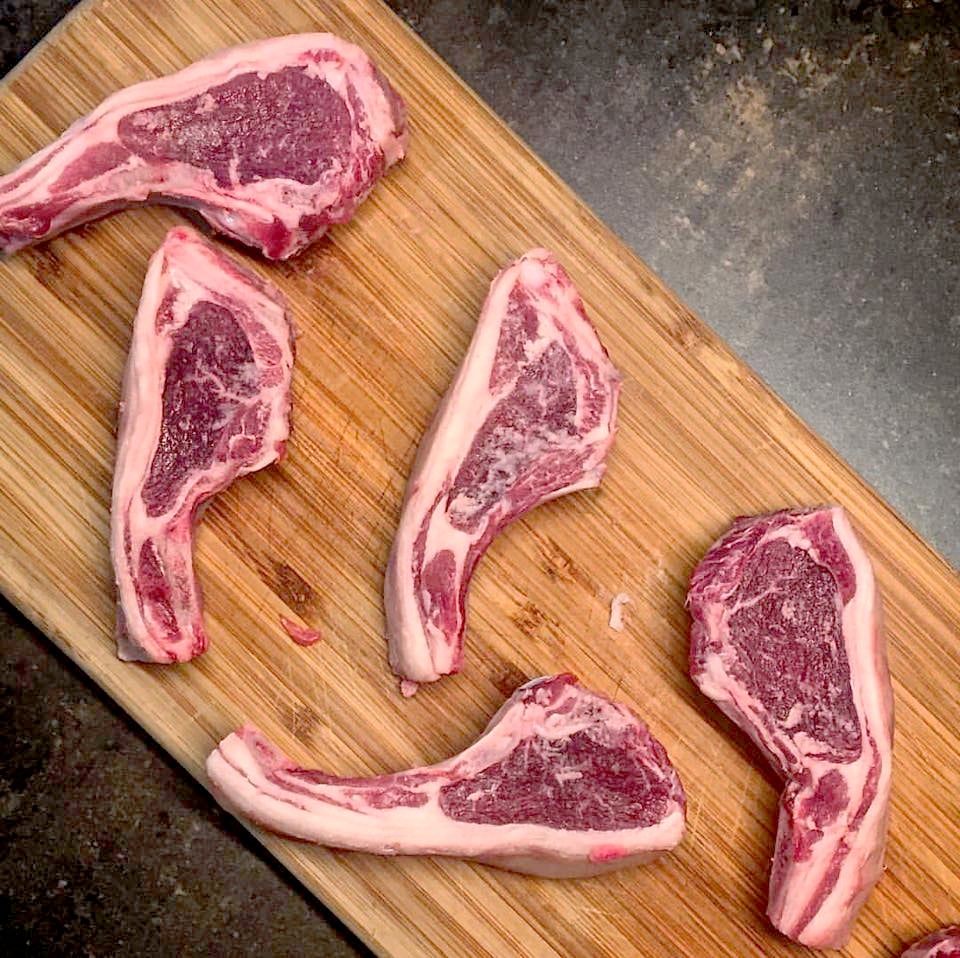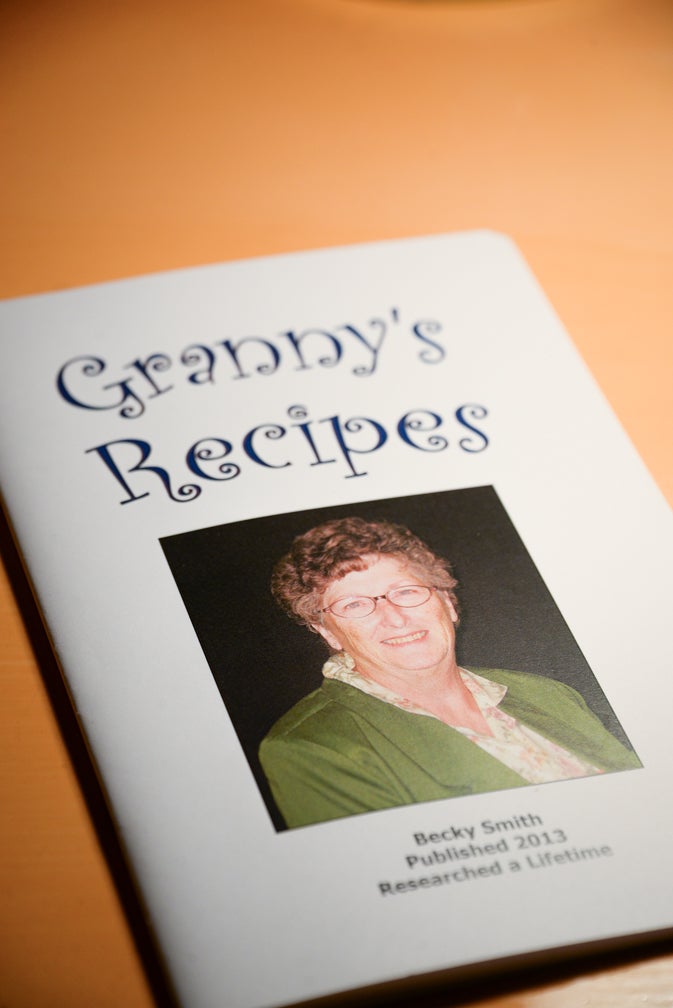For the owners of Hundred Happy Acres Farm, lamb is what’s for dinner.
Traditionally considered a food of Easter, lamb’s current reputation is for being a hard dish to cook right, and frequently shows up on cooking shows as a test of a cook’s abilities. Picture Gordon Ramsey teaching the contestants of a cooking competition how to cook a pistachio encrusted rack of lamb and you get the idea.
But for Emily and Ken Lofald, the owners of Hundred Happy Acres Farm in Jonesville north of Owenton, lamb is a mild meat with a great flavor that cooks up quickly.
At one time, Ken said, lamb was a staple on the American dinner table.
“But when they were feeding the troops during World War II, they sent a lot of the older cuts of lamb,” he said. “When (the troops) came back, they didn’t want anything to do with it because they were being fed the oldest and the worst parts of the lamb… And I think, in the interim, people just got more of a taste for chicken and beef.”
Now, the meat’s reputation falls into two categories — ultra expensive gourmet entrees trucked out for special occasions like Easter dinner, and the mutton — meat from older ewes, a staple in Western
Kentucky barbecue.
According to the History Channel, lamb’s popularity at Easter started centuries ago during the original Passover. In Exodus, the Bible talks about the people of Egypt suffering a series of plagues, including the death of all firstborn sons. In order to protect themselves, Jews painted their doors with lamb’s blood so their homes would be “passed over.”
“Accustomed to eating roast lamb on Passover, Jews who converted to Christianity continued the tradition at Easter,” the channel reported in a story about the history of Easter foods. “Additionally, Christians refer to Jesus as the ‘Lamb of God,’ so it makes sense that the food shows up at the Easter table. On a less symbolic note, lamb would have been one of the first fresh meats available after a long winter with no livestock to slaughter.”
The Lofalds say their lamb isn’t like either of those.
“A lot of people get lamb from New Zealand or Colorado that tend to be wool sheep. Those have a higher lanolin content,” Ken Lofald said. “Our sheep are Katahdin, which is a type of hair sheep. They don’t have any lanolin, so we don’t have to sheer them and the flavor is very, very mild.”
At the Franklin County Farmers Market, Hundred Happy Acres Farm sells its lamb in a number of different ways — ground lamb, lamb chops, even lamb goetta.
Emily said she loves cooking lamb for dinner.
“The nice thing about the loin chops is four minutes and you’re done. Sear it two minutes on each side then let it rest,” she said. “It’s such an easy dinner — you don’t have to marinate it or anything. We like to do them one inch thick, so you don’t overcook it. And then just season it with salt and pepper so the flavor of the meat comes out.”
For Ken though, roasting a boneless leg of lamb on the rotisserie is his favorite way to cook the meat. Seasoned with Mediterranean seasoning and stuffed with garlic and lemon, putting the lamb on the rotisserie creates a dish that’s well done on the outside and more toward rare in the center. He also recommends pairing it with curry seasonings, or even a good chimichurri sauce.
Ken said he gets people’s view of lamb.
“I spent a long time in the restaurant business and I’ve eaten a lot of gamey lamb, so I know what people are referring to. But the breed and what you feed them definitely has an impact. We’ve had people from Western Kentucky who want our mutton for barbecue, and they want that gamey flavor. Our lamb just isn’t right for that type of dish,” he said.
For those interested in cooking lamb for the first time, Ken recommends starting out simple.
“Generally, we’ll recommend starting with the ground lamb and putting it in meatballs or burgers or pasta,” he said. “Then, I think you move on to the loin chops and the leg of lamb. I think that’s part of the intimidation too is that it is more expensive, so they don’t want to mess up that protein … so they can start with something that is easy and work their way up. I think all the cooking shows have helped people to try different cuts of meat, but it has also intimidated people unnecessarily.”














